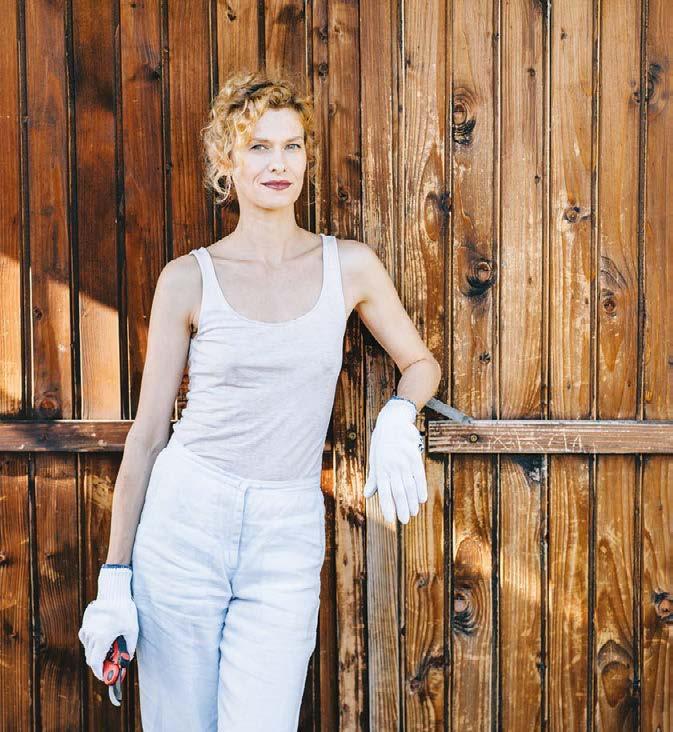
4 minute read
Spring Clean Your Garage
Don’t let your garage become a black hole of trash, garden tools, unused sports equipment, and Halloween decorations! When you declutter your garage, you’ll find that your mind clears out as well.
Give yourself plenty of time when you begin this hefty project. If you’ve neglected this task for long, you may need a full day to accomplish it. Choose a day when you don’t have other obligations so you don’t run out of time, give up, and throw everything back in a box to do later.
Advertisement
Begin by going through each box that is stacked on your shelves or piled up in the corner. Sort these items into three piles. Decide whether the object in question is something you need, something you want, or something to toss—either at the dump or at a donation store. Seriously ask yourself this question: Do I need it or love it? If the answer is no, toss it.
After sorting everything into the three piles, move your toss pile outside of your garage and if possible, take it to the dump or donation center immediately. Otherwise, these items may mysteriously make it back into your garage. Get rid of them while the getting-rid-of is good!
Next, take your keep pile and separate the items into appropriate categories: lawn and garden supplies, holiday decorations, childhood keepsakes, tools, pet food, and whatever other categories you need. Items that need to be stored in containers are best placed in clear, plastic tubs so that you can easily see what is inside. It will keep you from searching through grandma’s china box when you are looking for that pair of hockey skates. Keeping pet food in secure, tight cans will keep little creatures from sneaking a snack and infesting the cat food.
If you find you don’t have room for all your belongings, remember that your walls offer lots of vertical storage space. Peg-boards and hooks can hold a vast amount of garden tools and sports equipment. If you put up shelves, try to place them on raised legs so you can keep the floor clean of dirt and insects. Open shelves tend to be better than closed cabinets in your garage because you can more easily find what you are looking for. They will also encourage you to keep things tidy because you can’t close the door and hide the mess.
As you begin to place your items back in the garage, consider the end use. For example, keeping your lawn mower near the garage door instead of in the back will help to keep grease and dirt close to the outside and easy to sweep out.
While your garage is empty, give the floor a thorough sweeping. Go ahead and sweep the cobwebs off the walls and window sills while you have a broom in your hand.
Spring brings us longer daylight hours and warmer weather. Take this opportunity to spruce up your garage before you begin summer yard work and you’ll be glad you did.
Taylor’d with Style Pantyhose Perspective
By JeanAnn Taylor
If you are a woman over the age of thirty, you probably grew up wearing some form of hosiery every time you wore a dress—to work, to school, to church, and to social events. They were a staple in every woman’s wardrobe. Should I wear hose today? was never a question. Wearing them was an essential element of our attire—just as important as shoes and underwear.

Hosiery has been worn as far back as the 11th century. At this time, women wore full-skirted, ankle-length dresses, so it was the men who wore hose for warmth. Changes in hosiery and our perspective of what was considered appropriate and fashionable, began in the 1920s, when skirt hemlines rose from ankle-length to calf-length. Women began wearing flesh-colored stockings, made from silk or rayon, for warmth and modesty. Hosiery, at that time, was leg-length and held in place with girdles, garters, and suspension clips. In 1939, Dupont revolutionized fashion by making stockings from nylon. These new stockings were more durable, making them last longer. They were stretchier, which made them fit better. They were also more sheer, which made them more attractive. Women loved their stockings, so when America entered World War II and Dupont ceased stocking production to make materials needed for the War effort, unrest ensued. The stocking shortage led to disturbances in shops, known as “nylon riots.” Women were so desperate for an attractive leg line, they painted “seams” on the backs of their legs to create the illusion of a stocking. After the War, women rushed to replenish their supply. In 1945, Macy’s sold out of their entire stock in six hours—that was 50,000 pair!
In the 1950s, hosiery was considered to be ultrafeminine, glamorous, and romantic. Stockings gave women a modest, yet alluring appeal. From pin-up girls to housewives, leaving home without wearing stockings was considered to be tacky and in poor taste. Then in 1959, our perspective began to change because miniskirts became remarkably popular. These thighhigh hemlines required a more attractive way to wear hosiery—a way that wouldn’t expose garters and suspension clips. The stocking revolution initiated with dancers who began sewing the legs of stockings to panties, leading to the birth of pantyhose. This new form of hosiery led to even higher hemlines because women could flaunt their legs without worry of showing attachments.
The development of pantyhose was the perfect solution to the uncomfortably tight girdles and the metal clips that dug into thighs. I have vivid memories








